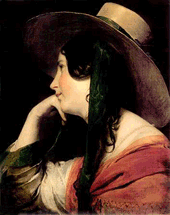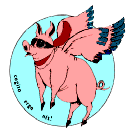| The Journal of Provincial Thought |
Shrdlu, born in 1891 in the fetid Brupp District of Stenchpuddle in lower eastern Unserbeenershire, grew up on the streets that quartered the district of squalid back-to-back/up-and-downer cottages erected in the 1820s by the coal and pork barons. He was as underfed, dirty and bejabbered as any urchin of the day, but he had the astounding good fortune to be noticed by the Brownfrock Brothers who ministered to this cesspool. He was taken to a day school, beaten soundly with a pandy bat, given 1 ½ square meals a day and taught his abecedarium with the aid of a cat o’nine tails, a primer printed in the XVIIIth century and a cataplasm of earnest prayer. After years at
He was 15 years old, knew Greek, Latin, Olde Pharsee and a smattering of Patagonian, along with the Brothers’ standard curriculum of phrenology, numismatics, phlebotomy, funambulism, proctology and advanced logarithms. From this humble entry into the great, bustling world, plucky Etaoin rose like a backwards meteor. He learned to busk on the streets of
In a very few years he had met and bedazzled the stars of the Glasgow theatre world, such as Alfred Lord Fartch, Pearse O’Flatulla, Uwanda Godspeed and (of course) G.W. Zutrz, the great-grandaddy of Keltic Everything. He found he could write verse in arcane rhythmic and stanzaic patterns without even knowing it, that scrawling a three-act parlor gambol was a doddle, that even weird song patterns involving banshees and ghoulies were music to his ears. He began to claim that he was not (strictly speaking) Scottish but a rare combo of French and ur-Celtic stock, descended from the Goths that overran
Shrdlu was a devoted autodidactic student of such surreal history, and after festering in the British Library Reading Room for a decade, he became the most irascible and mongrelic author published by the major university presses, insisting on typesetting every jot, tittle, comma, accent grave, skyhook, umlicht and other bizarre need of Old Keltic dialects. His thick, crumbly books moldered on remainder stands along the Bourse, but the besotted British academics slavered to publish his every dropping. He had his portrait made by such sterling modernists as Augustus John and Modigliani (as a sensuous reclining nude shaped like a banana), appeared in one of Louis Buñuel’s more gruesome surrealist films (in a close-up, Shrdlu’s lips seem to be severed by a giant papercutter) and was memorialized onstage in Paris in the infamous brownshirt version of the Scottish Tragedy by enfante terrible Jeanne Coctupp. In the dark 1930s, Etaoin was a puddle of glimmer like a small spotlight on that epoch. He migrated to
Shrdlu’s star rose and glittered handsomely into the middle of the 20th century, and he achieved a vast reputation as a fat-mouthed and disputatious, argy-bargy-prone pubcrawler with an eye for the main chance. He outlived such arrant glow worms as Dylan Thomas, out-drank pusillanimous revelers like O’Starrygaze, out-felonized old lags like Behan and reached a mass audience through hard-to-obtain LP recordings of various poetry-and-song sessions captured by devoted followers on magnetic tape. Shrdlu’s melodious baritone rang through suburban living rooms from Levittown to
This was, however, not the end of Etaoin Shrdlu, Bard of Iron. He rose again in the benigner 1970s (except for
![]()
| jptArchive Issue 6 |
![]()
| Copyright 2008- WJ Schafer & WC Smith - All Rights Reserved |



